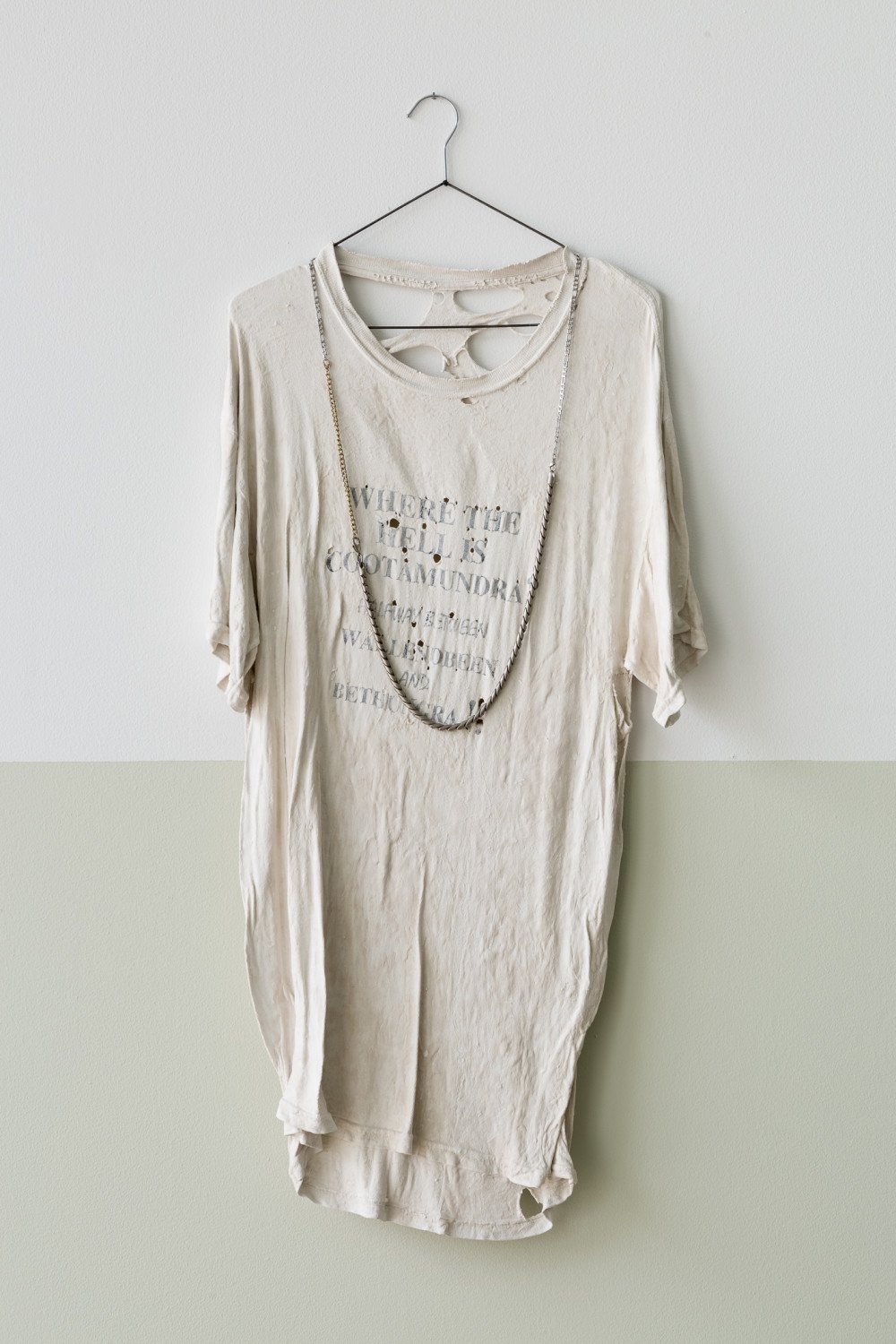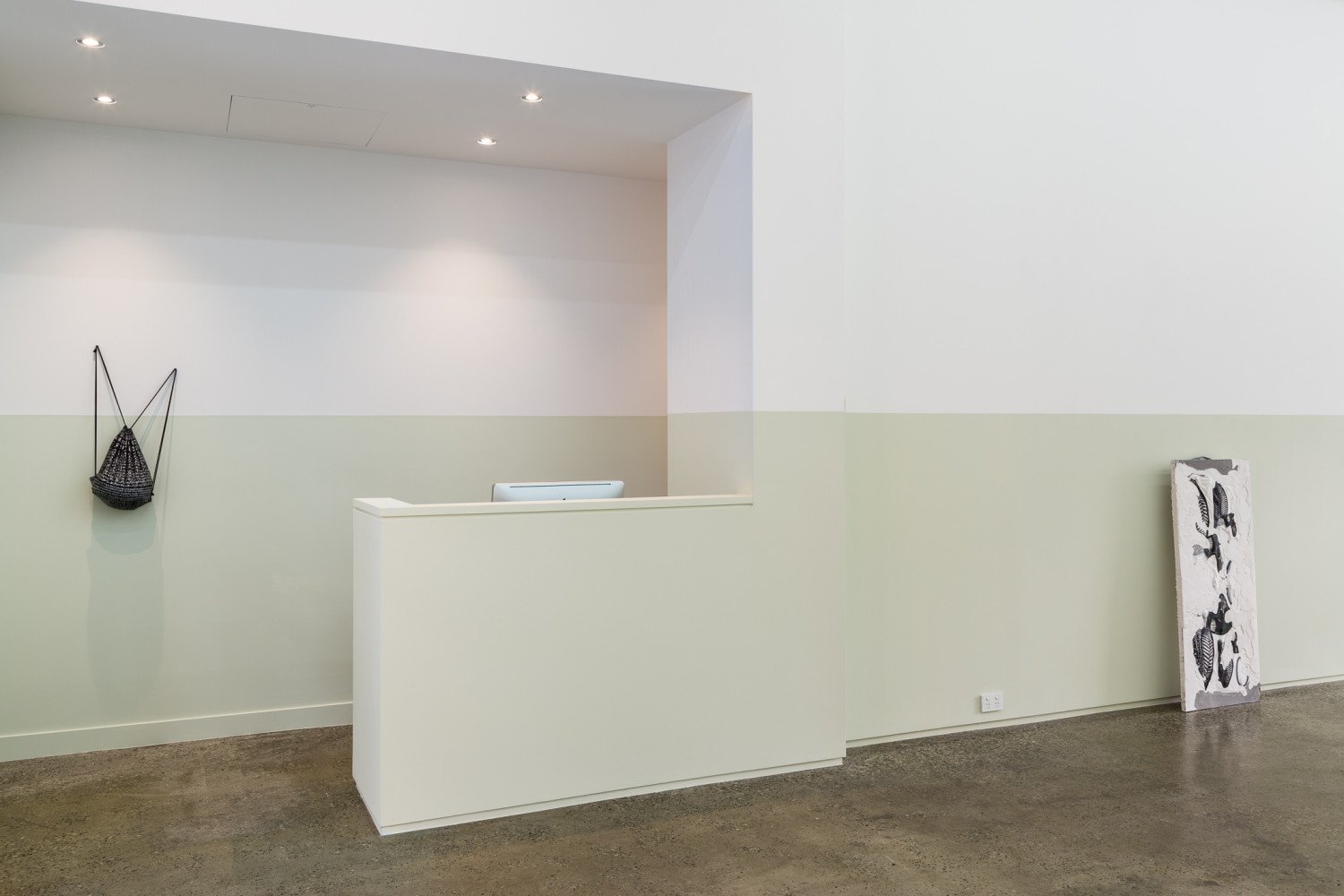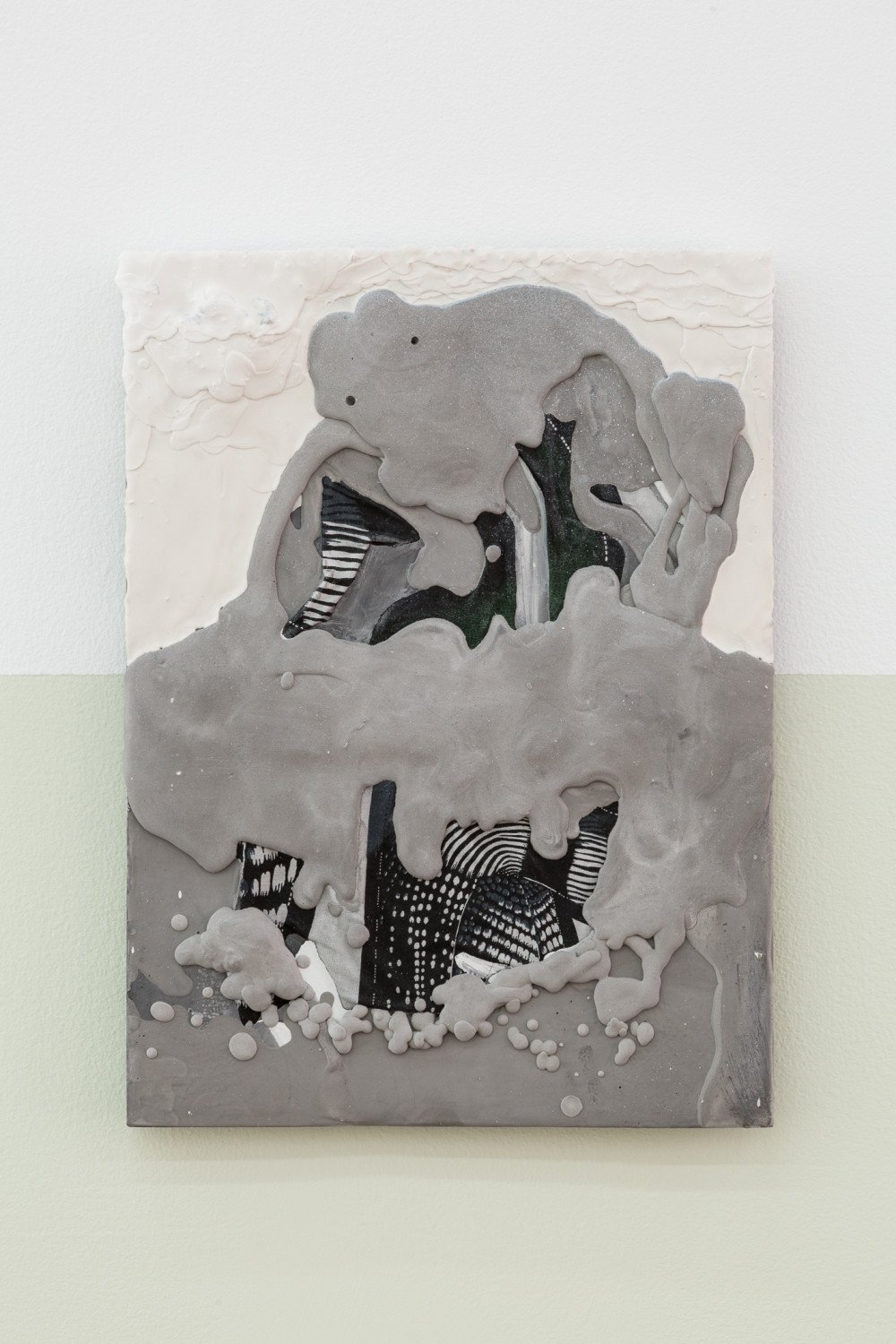dissolve
Gertrude Contemporary Glasshouse, Melbourne, 2017
Text by Amy Vuleta
“I don’t know if this is going to work.”
“What? The walls?”
“I want it to cover everything then sort of fade away, incomplete.”
~ ~ ~
D.
“You’re unknowable,” I say. He tells me, “You just gotta stick around long enough!”
Time stops, changes pace, skips, and later, I sit still in bed beside this new lover. It’s new; love, for now, and we’re both wondering if the time will last. Me, if I’ll be able to stick with it, to stay the course. In this new space, time speeds up and slows down. Time and what we have to give in it changes. We don’t see it happening, or don’t want it to, but time steps down incrementally, slow then faster, reducing, becoming harder to find, harder to give and to receive. Less.
Or else time fills up the space and you find you’re all alone, as if in the hull of an empty ship, with the ghosts of who’s been there before or will come there after. And all you have is time and you long for someone to come along to fill it up, to take it away from you, someone to give your time to.
O.
I have a memory, this one small moment, in the doorway to my bedroom, in the dark. I walk in as he is about to walk out. I stop, naked, hands on the top of the doorframe. We stand face-to-face, his hands on me, with me so tall, the size of a door. He’s smaller. I think: he’s only as big as a man.
L.
I realise at a certain point in what might have been called a relationship that I’m being strung along. I even find myself, after going over scenarios and imagined conversations in my head for half a day, picturing clearly the string: it’s cotton, white, thin and insubstantial, gathering bits of dirt and fluff as it trails along the ground in front of me. Its source out of sight, somewhere up ahead. I see it being dragged through plaster dust, a puddle of water, from the house he’s building, leaving the faintest smudge on the street as it traces the space between us. I think of the t-shirts he left at my house, implying a return visit. More than one for more than one more visit. One of them black, for work the next day. The other old, white with the words WHERE THE HELL IS COOTAMUNDRA? printed on the front, fading. This one was for sleeping, threadbare and torn in a few places from overuse. I wanted to wear it to bed myself, but didn’t. It felt too sad, like I would be slipping into someone else’s skin, into somewhere I didn’t belong. The bed shirt was for an ex- or future- girlfriend, not me, never for me. The amount he had for me traced a steep descent towards zero on the X axis, where X is time and Y is all of the things in a complicated life that need more attention than a new lover. Time runs low, runs out.
X.
As a little kid I’d have this recurring dream of drowning in a swimming pool. It would be dark out, the light making the water green but glowing, like the pool in our backyard at night time. I hadn’t learned how to swim yet, when I’d have the dream. It would take place in the deep end of our pool. My face would be up against the wall as I went down, down, into the suffocating glowing green water, the darkness all around outside.
H.
She’d often been moved to tears when faced with a beautiful artwork. Something that spoke, through an image, an aesthetic, a gesture, to that part of her she couldn’t express. Like the inside of her brain was up on the wall, or in the space, being shown to her. The recognition in those instances is overwhelming and exquisite. Like nothing else.
A.
His hope, he tells me, is to make artwork that is so referential it becomes too familiar to the self, loses all meaning, and makes the viewer lose interest totally in themself and their surrounds the moment they enter the gallery. He wants them to be moved to start scrolling through their phone, to get lost in there, to not see themselves in the art, to not see the art. That’s the experience.
I don’t think the work is as irreverent as he hopes. I see more in it.
~ ~ ~
AV: is it nostalgic? …I mean, of course it’s nostalgic.
AJC: no. it’s not meant to be.
AV: but it’s an archive.
AJC: a museum, mausoleum. It’s me, but it could be anyone.
AV: are all of the things in them things you’ve owned?
AJC: yes. From places I’ve been to, traveling. Things given to me or that I’ve ended up with. You know when you travel, you can’t tell what you like…you turn into a bit of a scenester and want to look cool for where you are.
AV: you think you like everything! You don’t realise it’s just that you’re relaxed!
AJC: anyway it’s supposed to be anonymous. All of the things could belong to someone else.
AV: But they don’t; they belong to you.
AJC: I’ve owned and used all of the things myself. Some of them were unwanted but I kept them. I’ve been carrying some of the things around with me for five years.
~ ~ ~
Susan Stewart writes that nostalgia is the desire to enclose all time in space; to arrest time. The work does that, of course it does. And it shows the destruction of time, the dissolution of time, time running out, becoming less, more lean, disappearing.
Yet preserved.
Yet destroyed.
Let me tell you what I see:
I see substance and the loss of mass in the floor-tiles; pillars that stand tall and strong, but that gradually descend, decrease in matter, expose their bones, fall, crumble; materials that are solid losing integrity, then breaking.
I see a letting-go of the self, the reduction of matter, the desire to hold on butting up against the desire to let go. I see these two desires pulling against one another as well. The objects are embedded in the structures, in matter, both preserved and destroyed. Holding mass yet losing it.
If nostalgia is “the desire for desire” we’re both offered and denied it in this space. I look at the art, and all I feel is longing.
~ ~ ~
“I couldn’t leave it alone. The incompleteness of it bothered me. So I carried it through, over the desk, into the kitchen, right through, painted the whole thing, right down to the floor, everything you’d see.”
~ ~ ~
[AV: I like the duck one. What’s the story with that one?
AJC: They’re Loons. It’s not a duck, just a waterbird… but whatever.]
Photography by Christo Crocker





